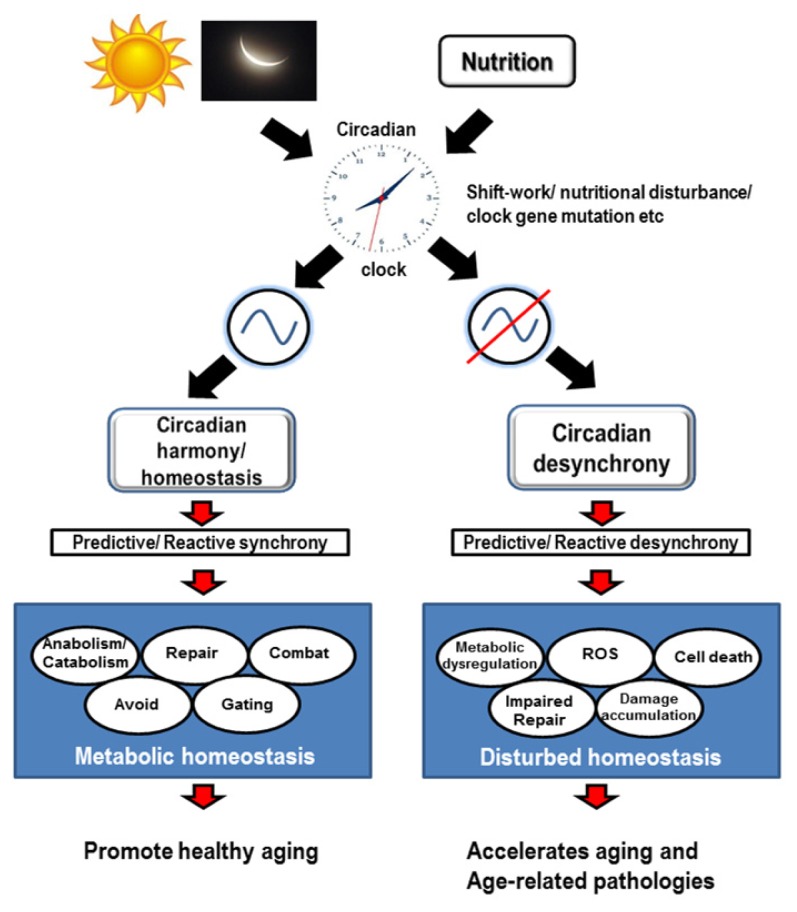Figure 1.
A schematic representation of the role of clocks in cellular tasks resulting from predictive/reactive synchrony or desynchrony impacting cellular homeostasis and consequently affecting healthy aging. Light-dark cycles as well as nutrition play an important role as zeitgebers (time-givers) resulting in synchronous functioning of the clock and clock controlled genes (CCGs) which regulate metabolism by coordinating anabolic and catabolic reactions, repair functions, combating/avoiding unfavorable stress situations as well as gating specific physiological, cellular and molecular events in a temporal fashion to achieve cellular metabolic homeostasis. Situations which impact the clock, such as shift-work, disturbance in the nutritional cues of even mutations in certain clock genes result in circadian desynchrony impairing the organisms ability to predict/react to changing demands of physiology which unbalances cellular homeostasis by metabolic dysregulation, reactive oxygen species (ROS) generation, affecting repair mechanisms leading to damage accumulation and apoptosis. This results in accelerated aging and propensity for age-related pathologies.

